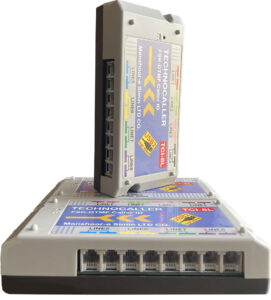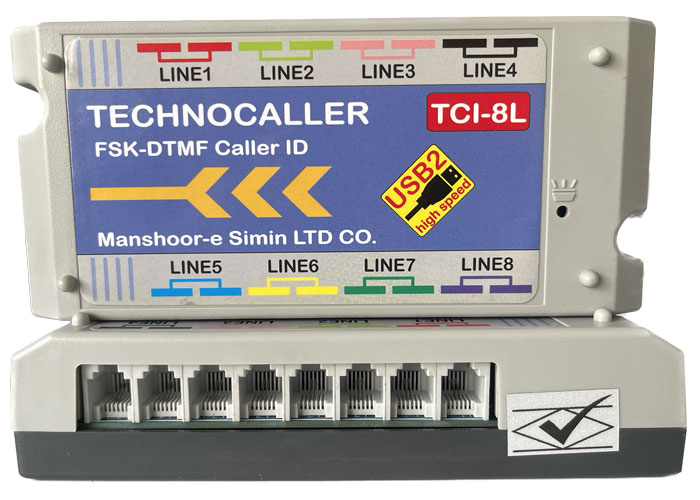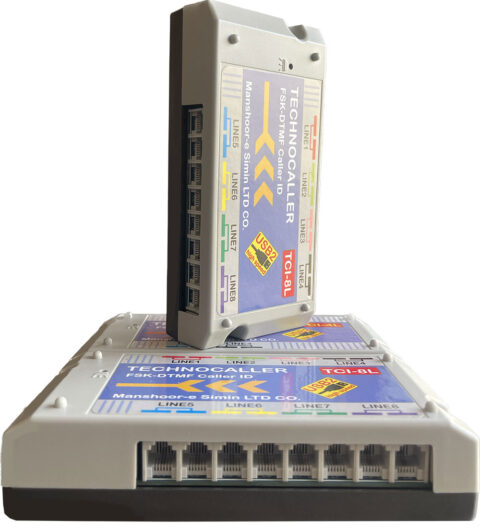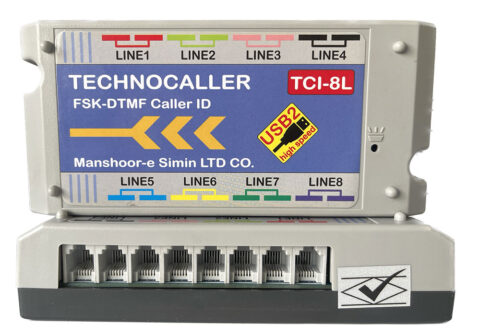What is Caller ID?
Caller ID is responsible for displaying the name and other incoming information on the telephone screen, on a separate connected device, or on other displays, such as cable television, when telephone and television services are available.
This system is suitable for businesses such as restaurants, fast food and flower shops.
Advantages: 1. It is for ensuring and quickly handling phone orders – 2. The personal information of the buyer is displayed – 3. It displays the list of previous purchases.Caller ID service, also known by similar terms: CID, Calling Line Identification (CLI, CLID), Calling Number Delivery (CND), Calling Number Identification (CNID), Calling Line Identification Presentation (CLIP), and Call Display .
Caller ID of a telephone service
Caller ID is a phone service that can be activated on analog and digital phones. When you use Caller ID on your phone; The phone number of the caller and sometimes even the name of the person can be seen on the phone. In more advanced caller ID devices, in addition to displaying the caller’s number, there is the ability to transfer this information to the computer and record it in the desired software by connecting the device to a computer.Caller ID displays the caller’s number after the first ring or at most the second ring. However, to determine the exact time of displaying the contact number, you should also pay attention to the country or region where you live.
Now the question arises, how and in what way can caller ID display the caller’s phone number on the destination phone? FSK or DTMF is one of the two methods used to set up caller ID in different countries. But how do these algorithms work and what are the differences? We will discuss it further.
Telephone line identification
Call display is a form of marketing used in Canada (although some customers still colloquially call it “caller ID”).
The concept of Caller ID identification as a service, for POTS subscribers, originated from Automatic Number Identification (ANI), as part of the toll-free number service in the United States.However, Caller ID and ANI are not the same. ANI was originally a service in a non-electronic central office that identified the landline telephone number from which the call was made. Previously, the contact number could not be identified electronically. In addition to the caller’s phone number, Caller ID can also send the subscriber’s name, if available. This name can be transmitted by the originating telephone, or obtained from a line information database by the terminal switch.If no name is available, city, state, province or other name may be submitted. Some of these databases may be shared between multiple companies, each of which pays a fee each time a name is “exported”.
This is why mobile callers are displayed as “Wireless Caller” or the location where the phone number is registered.


Caller ID display with FSK
Caller ID with FSK (Frequency-shift keying) is a type of frequency modulation scheme that transmits digital information by changing the discrete frequency of the carrier signal. The simplest type of FSK uses a pair of discrete frequencies to transmit binary information. So when FSK is used in caller ID, it can transfer the caller’s number to the destination phone with the help of binary data 0 and 1.FSK is also used to transmit information on analog lines, which is most commonly used in modems. In this way, when the transmitter wants to send bit 0, it creates a wave with a frequency of 2200 Hz and when it wants to send bit 1, it creates a wave with a frequency of 1200 Hz. These frequencies are continuously being sent and received between the sender and the receiver, and by putting them together, the caller’s information, such as the phone number, can be recognized and displayed on the destination phone.
Caller ID display with DTMF

Caller ID of Manshoor e simin
Because the network does not connect the caller to the responder until the phone is answered, the caller ID signal generally cannot be changed by the responder. However, most service providers allow responders to block the presentation of caller ID through the vertical service code *67.A call placed behind a private branch office (PBX) has more options. In the typical telephone environment, a PBX connects to the local service provider through Primary Rate Interface (PRI) trunks.
In general, although not absolutely, the service provider simply sends any calling line identifiers that appear on PRI access trunks transparently across the public switched telephone network (PSTN). This opens up the opportunity for the PBX administrator to program any number they choose into their external phone number fields.Some of Manshoor e simin Caller ID benefits: IP telephony services (ITSPs or Internet Telephone Service Providers) support PSTN gateway installations worldwide. These gateways forward calls to the local calling area, thus avoiding long distance charges.
ITSPs also allow a local user to have a number on a “foreign” exchange. For example, the respondent from Tehran can have a number from Mashhad. When that user makes a call, the call line ID will be Mashhad number, even though they are actually located in Tehran. This allows the call to be returned without the need for a long-distance call.In the case of cell phones, the biggest problem seems to be the transmission of caller ID information over the network. Mobile phone companies must support trunks connected to a significant number of wireline and PSTN access carriers.
What is the use of Manshoor e Simin Caller ID?
Imagine you are working in an environment where you have to answer many phone calls during the day and you need to identify the caller. Now, if you are going to ask each of these people for details such as name and surname, address, etc.; It will be a tedious and long process that slows down the operator’s performance and leads to dissatisfaction and wasted time. Especially if the caller is a former language learner, the school operator or secretary is forced to search for common specifications in notebooks or system software.In such cases, with the help of the Caller ID device, you can easily avoid wasting time and solve such problems. In this way, connect the monitor-type Caller ID device with a USB cable to the computer and school management software. After that, immediately with a phone call, you can see all the necessary information of the caller such as name, address, contact number, code, last date and time of call, history of participation in courses, latest financial status, etc. on the screen.
Using Caller ID monitor helps you to identify the subscriber in less than 5 seconds (the time between 2 phone rings) and there is no need for the caller to introduce himself. In this way, by using the contact’s name in answering and knowing their request, you will do all the processes faster and in this way you will gain the satisfaction of the customer, which will become your strong point.
CLID localization
CLID localization allows companies to increase their call rates by increasing the chances of a phone call being answered by support. Since a localized callerid is displayed on the caller’s device, the call is perceived as a local and recognizable number to the responder, so there is no hidden or undialed number.
The phone number provided is adjusted depending on the area code of the dialed number.In 2020, a large company in Abadan realized that just one missed call using a local number can be a big deal that is easily missed.
Because the incoming call is not an SMS.
It only takes one look at a text message to know it’s for an extended warranty on a car you’ve never owned or your winning a lottery you’ve never entered.
So, by using Simin’s Caller ID, you won’t miss any calls.









